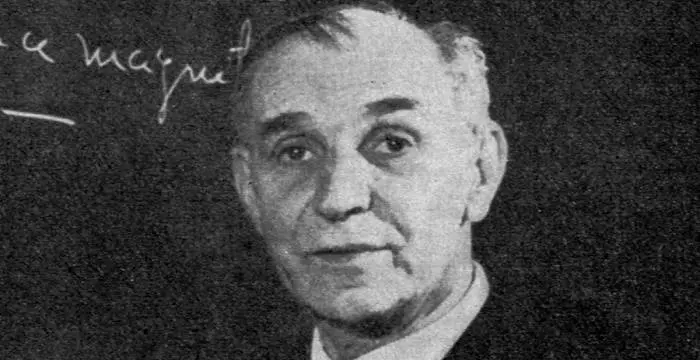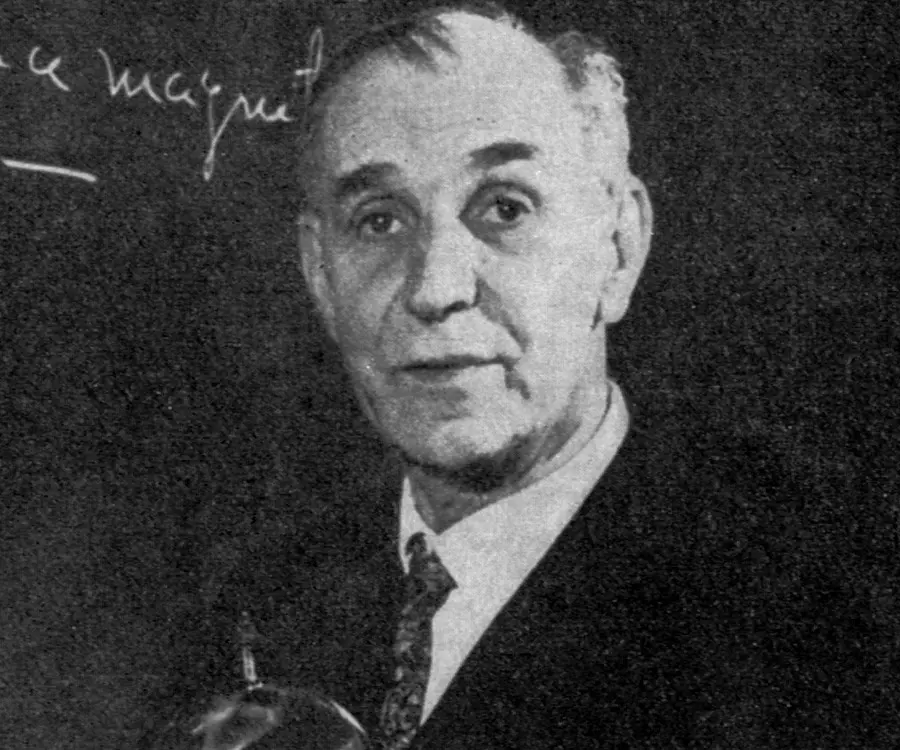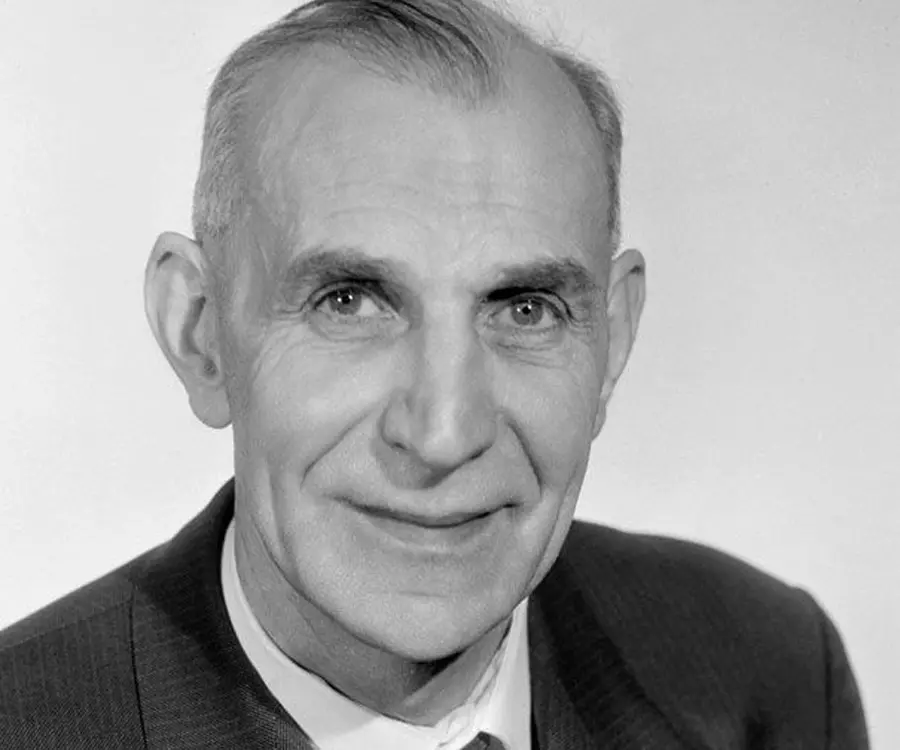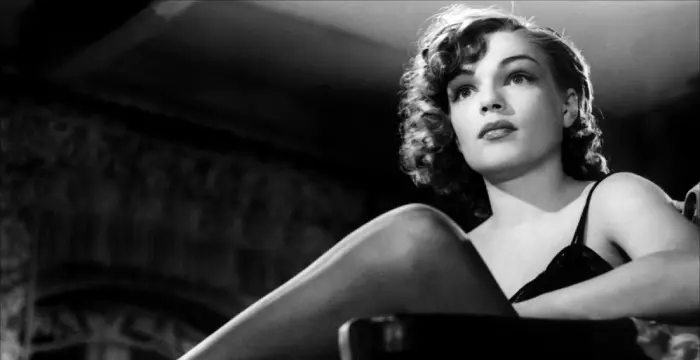
Alfred Kastler - Scientists, Facts and Childhood
Alfred Kastler's Personal Details
Alfred Kastler was a French physicist who was awarded the ‘Nobel Prize in Physics’ in 1966
| Information | Detail |
|---|---|
| Birthday | May 3, 1902 |
| Died on | January 7, 1984 |
| Nationality | French |
| Famous | Scientists, Physicists |
| Spouses | Elise Cosset |
| Childrens | Claude-Yves, Daniel, Mireille |
| Birth Place | Guebwiller, Alsace, German Empire |
| Gender | Male |
| Father | Fréderique Michel Kastler |
| Mother | Anne Catherine Kastler |
| Sun Sign | Taurus |
| Born in | Guebwiller, Alsace, German Empire |
| Famous as | Physicist |
| Died at Age | 81 |
// Famous Physicists
Henry Cavendish
Henry Cavendish was a theoretical chemist and physicist, renowned for discovery of hydrogen and calculation of the mass of earth. To know more about his childhood, profile, timeline and career read on
Walter Kohn
Nobel Laureate Walter Kohn was an Austrian-born American theoretical chemist and physicist. Check out this biography to know about his childhood, life, achievements, works & timeline.
Nikola Tesla
Nikola Tesla was a Serbian-American inventor, best known for his development of alternating current electrical systems. This biography of Nikola Tesla provides detailed information about his childhood, life, achievements, works & timeline.
Alfred Kastler's photo
Who is Alfred Kastler?
Alfred Kastler was a French physicist who was awarded the ‘Nobel Prize in Physics’ in 1966 for discovering and developing optical procedures to study Hertizian resonances in atoms. His areas of research in collaboration with another French physicist Jean Brossel included quantum mechanics, spectroscopy and interaction between atoms and light. He examined the different radiations that emit by exciting atoms with radio waves and light. He went on to work on the combo of magnetic resonance and optical resonance to develop the procedure of optical pumping, a procedure where atoms are stimulated in a specific substance in a way that they achieve greater states of energy. As the light energy applied in stimulating the atoms is re-emitted, the optical pumping system evolved as a significant step in advancing the development of the theory of lasers and masers. His long investigations on atomic spectra helped in the commencement of a new field of nuclear magnetic resonance. He served as an academician at the ‘Blaise Pascal University’, ‘University of Bordeaux’, ‘University of Louvain’ and ‘École Normale Supérieure’. He remained Director of Research of the ‘National Centre of Scientific Research’ of France. He was active in peace movements, advocated for establishing Israel, opposed the rapid generation of nuclear weapons and voiced out his opinion against participation of America in the Vietnam War. He received Knighthood (1952), the French Legion of Honor Commander (1957) and Wilhelm Exner Medal (1979) among other awards and achievements.
// Famous Scientists
Juliane Koepcke
Juliane Koepcke is a German-Peruvian biologist, who was the lone survivor among the 92 passengers and crew of the ill-fated LANSA Flight 508 that crashed in the Peruvian rainforest on 24 December 1971. Know more about her life in this biography.
Henry Cavendish
Henry Cavendish was a theoretical chemist and physicist, renowned for discovery of hydrogen and calculation of the mass of earth. To know more about his childhood, profile, timeline and career read on
Konstantin Tsiolkovsky
Konstantin Tsiolkovsky was a Russian rocket scientist and a pioneer of astronautics. This biography provides detailed information about his childhood, family, personal life, career, achievements, etc.
Childhood & Early Life
He was born on May 3, 1902, in Guebwiller in Alsace (at that time under the German Empire, presently in France) to Fréderique Michel Kastler and his wife Anne Catherine Kastler.
He did initial studies at his native place and then attended the Oberrealschule of Colmar, Alsace, that became the ‘Lycee Bartholdi’ in 1918 following Alsace’s reversion to France after the ‘First World War’.
His interest in science was infused by his science and mathematics teachers from an early age. After reading the book on atomic structure and spectral lines by Arnold Sommerfeld, he got introduced to the principle of conservation of momentum that is used in exchanging energy between radiation and atoms, a foundation that guided him all through his research career.
After completing high school education in 1921 he joined ‘École Normale Supérieure’ in Paris from where he completed BS in Physics in 1926.
Career
From 1926 to 1931 he served the Lycée of Mulhouse as a teacher of physics.
He then delved into an academic career in higher education and joined the ‘Bordeaux Faculty of Science’ as an assistant of Professor Pierre Daure. He served there from 1931 to 1936.
Thereafter completing his teaching duties he would utilise his free time into conducting research work. He was introduced to experimental spectroscopy by Professor Daure. Kastler worked in the area of optical spectroscopy for years, especially on Raman Spectroscopy and atomic fluorescence.
From 1936 to 1938 he remained a physics lecturer at the ‘Blaise Pascal University’ in Clermont-Ferrand. In 1937 he turned his focus to the luminescence of sodium atoms in the upper atmosphere. He succeeded in establishing that sodium vapour can absorb the D line of the twilight sky. He along with his colleague Jean Bricard showed that the D line is polarized when the emission method is one of optical resonance generated by solar radiation.
In 1938 he joined the ‘University of Bordeaux’, where he was inducted as a university professor and served the position till 1941.
After being advised to return to École Normale Supérieure’ in Paris by Georges Bruhat, Kastler joined there as a teacher of physics in 1941 and became a professor of physics in 1945. He was allocated a chair there in 1952. He served the school till 1968 where he trained, guided and collaborated with many students who went on to achieve great heights in the field of optics.
In the midst of German occupation French scientists remained detached from rest of the world and it was not until 1945 that they could manage to send students in other countries of the West to acquire knowledge of recent scientific developments.
Kastler conducted most of his research work at the ‘Ecole Normale Supérieure’ where post war he and his student Jean Brossel formed a small research team on spectroscopy.
The duo founded a spectroscopic laboratory the ‘Laboratoire de spectroscopie Hertzienne de l'ENS’ in the Department of Physics of École Normale Supérieure in 1951. The lab which was later named as ‘Laboratoire Kastler-Brossel’ in 1994 in their honour has a second site on the Jussieu campus.
Kastler and Brossel collaborated together and researched on areas like spectroscopy, the study of the interaction between electromagnetic radiation and matter’; quantum mechanics, a fundamental field in physics which deals with methods that involve photons and atoms; and the interaction between atoms and light.
Kastler and Brossel suggested the ‘double resonance method’ that combines magnetic resonance and optical resonance. Kastler then developed the procedure of ‘optical pumping’ a method where atoms are excited in a specific substance such that they achieve greater states of energy. As re-emission of the light energy that is used to excite the atoms occurs, the optical pumping system emerged to be an important procedure that aided in furthering the development of the theory of lasers and masers.
‘Laboratoire Kastler-Brossel’ played a significant role in developing the field of atomic physics in the country and remains one of the leading research labs in the field of fundamental physics of quantum systems.
From 1968 to 1972 Kastler served the ‘National Center for Scientific Research’ in France as its Director of Research.
He was associated with ‘French Academy of Sciences’ and ‘French Physical Society’ and was Foreign Member of ‘Polish Physical Society’, ‘Royal Flemish Academy of Belgium’ and ‘Optical Society of America’.
He received honorary doctorates from the ‘University of Louvain’ in 1955’, ‘University of Pisa’ in 1960 and ‘University of Oxford’ in 1966.
He had written poetry in German language and in 1971 he published ‘Europe, ma patrie: Deutsche Lieder eines französischen Europäers’ (‘Europe, my fatherland: German songs of a French European’).
He remained President of the Board of ‘Institut d'optique théorique et appliquée’.
‘Action Against Hunger’, an NGO which was set up in 1979 by a group of French doctors, writers and scientists with the objective of ending world hunger selected Kastler as its first Chairman.
Awards & Achievements
He received the ‘Nobel Prize in Physics’ in 1966.
Personal Life & Legacy
He married Elise Cosset, an ex-student of ‘École Normale Supérieure’, in December 1924. By profession she was a history teacher in secondary schools.
They were blessed with three children, Daniel (born in 1926), who became a Professor of Physics at the Faculty of Science in Marseilles; Mireille (born in 1928), who is by profession an ophthalmologist working in Paris; and Claude-Yves (born in 1936), who is a Russian language teacher at the Arts Faculty in Grenoble.
Kastler passed away on January 7, 1984, at the age of 81 years in Bandol, France.
// Famous French peoples
Simone Signoret
Simone Signoret was a French actress who became the first French person to win an Academy Award. Check out this biography to know about her childhood, family life, achievements and other facts related to her life.
Jade Weber
Scroll down this bio to find out everything about French model Jade Weber. Be it fun facts, birthday, trivia or details of her personal and family life, you’ll find everything here.
Micheline Roquebrune
Micheline Roquebrune is a petite Moroccan-French painter best known as the third wife the legendary Scottish actor Sir Sean Connery. Check out this biography to know about her birthday, childhood, family life, achievements and fun facts about her.
Alfred Kastler's awards
| Year | Name | Award |
|---|---|---|
Other | ||
| 0 | Holweck Prize (1954) | |
| 0 | CNRS Gold medal (1964) | |
| 0 | Nobel Prize for Physics (1966) | |
Alfred Kastler biography timelines
- // 3rd May 1902He was born on May 3, 1902, in Guebwiller in Alsace (at that time under the German Empire, presently in France) to Fréderique Michel Kastler and his wife Anne Catherine Kastler.
- // 1918He did initial studies at his native place and then attended the Oberrealschule of Colmar, Alsace, that became the ‘Lycee Bartholdi’ in 1918 following Alsace’s reversion to France after the ‘First World War’.
- // 1921 To 1926After completing high school education in 1921 he joined ‘École Normale Supérieure’ in Paris from where he completed BS in Physics in 1926.
- // Dec 1924He married Elise Cosset, an ex-student of ‘École Normale Supérieure’, in December 1924. By profession she was a history teacher in secondary schools.
- // 1926 To 1931From 1926 to 1931 he served the Lycée of Mulhouse as a teacher of physics.
- // 1931 To 1936He then delved into an academic career in higher education and joined the ‘Bordeaux Faculty of Science’ as an assistant of Professor Pierre Daure. He served there from 1931 to 1936.
- // 1938 To 1941In 1938 he joined the ‘University of Bordeaux’, where he was inducted as a university professor and served the position till 1941.
- // 1945In the midst of German occupation French scientists remained detached from rest of the world and it was not until 1945 that they could manage to send students in other countries of the West to acquire knowledge of recent scientific developments.
- // 1951 To 1994The duo founded a spectroscopic laboratory the ‘Laboratoire de spectroscopie Hertzienne de l'ENS’ in the Department of Physics of École Normale Supérieure in 1951. The lab which was later named as ‘Laboratoire Kastler-Brossel’ in 1994 in their honour has a second site on the Jussieu campus.
- // 1966He received the ‘Nobel Prize in Physics’ in 1966.
- // 1968 To 1972From 1968 to 1972 Kastler served the ‘National Center for Scientific Research’ in France as its Director of Research.
- // 1971He had written poetry in German language and in 1971 he published ‘Europe, ma patrie: Deutsche Lieder eines französischen Europäers’ (‘Europe, my fatherland: German songs of a French European’).
- // 1979‘Action Against Hunger’, an NGO which was set up in 1979 by a group of French doctors, writers and scientists with the objective of ending world hunger selected Kastler as its first Chairman.
- // 7th Jan 1984Kastler passed away on January 7, 1984, at the age of 81 years in Bandol, France.
// Famous Taurus Celebrities peoples
Jason Simpson
Jason Simpson is the son of former NFL running back, broadcaster and actor O. J. Simpson. Check out this biography to know about his childhood, family, life, and little known facts about him.
Sophie Reade
Sophie Victoria Reade is a British model and reality show star. Let’s take a look at her family and personal life, including her age, birthday, boyfriends, and some interesting facts.
ASMR Aspen
ASMR Aspen is an American YouTuber. Check out this biography to know about her birthday, childhood, family life, achievements and fun facts about her.
Bertil Gotthard Ohlin
Bertil Gotthard Ohlin was a famous Swedish economist. This biography profiles his childhood, family life & achievements.
Josh Temple
Check out all that you wanted to know about Josh Temple (Slogoman), the famous British YouTube Personality; his birthday, his family and personal life, his girlfriends, fun trivia facts and more.
Aidan Prince
Aidan Prince is an American dancer, actor and vlogger. Let’s have a look at his family and personal life including age, date of birth, net worth, and fun facts.
Alfred Kastler's FAQ
What is Alfred Kastler birthday?
Alfred Kastler was born at 1902-05-03
When was Alfred Kastler died?
Alfred Kastler was died at 1984-01-07
Where was Alfred Kastler died?
Alfred Kastler was died in Bandol, France
Which age was Alfred Kastler died?
Alfred Kastler was died at age 81
Where is Alfred Kastler's birth place?
Alfred Kastler was born in Guebwiller, Alsace, German Empire
What is Alfred Kastler nationalities?
Alfred Kastler's nationalities is French
Who is Alfred Kastler spouses?
Alfred Kastler's spouses is Elise Cosset
Who is Alfred Kastler childrens?
Alfred Kastler's childrens is Claude-Yves, Daniel, Mireille
Who is Alfred Kastler's father?
Alfred Kastler's father is Fréderique Michel Kastler
Who is Alfred Kastler's mother?
Alfred Kastler's mother is Anne Catherine Kastler
What is Alfred Kastler's sun sign?
Alfred Kastler is Taurus
How famous is Alfred Kastler?
Alfred Kastler is famouse as Physicist















